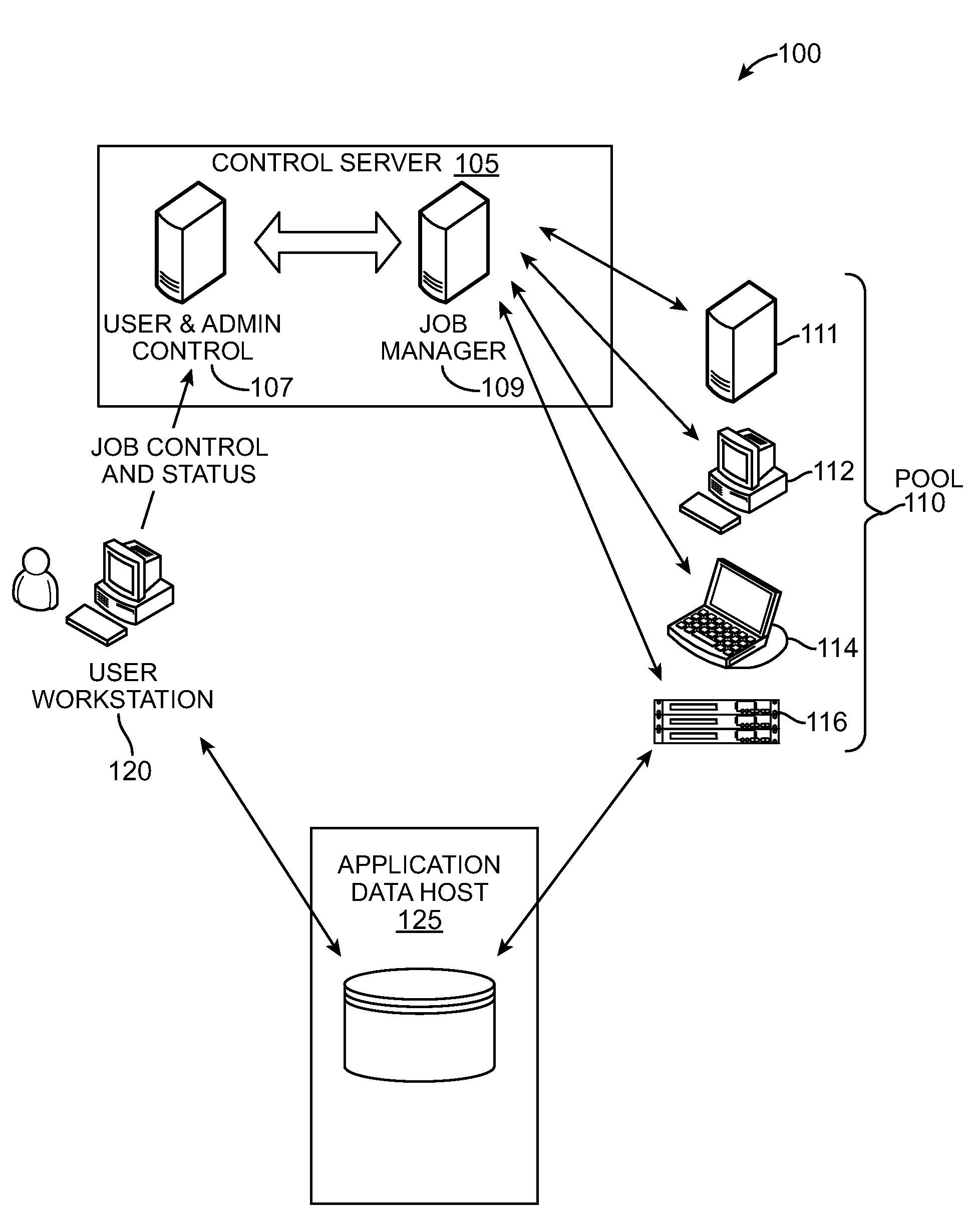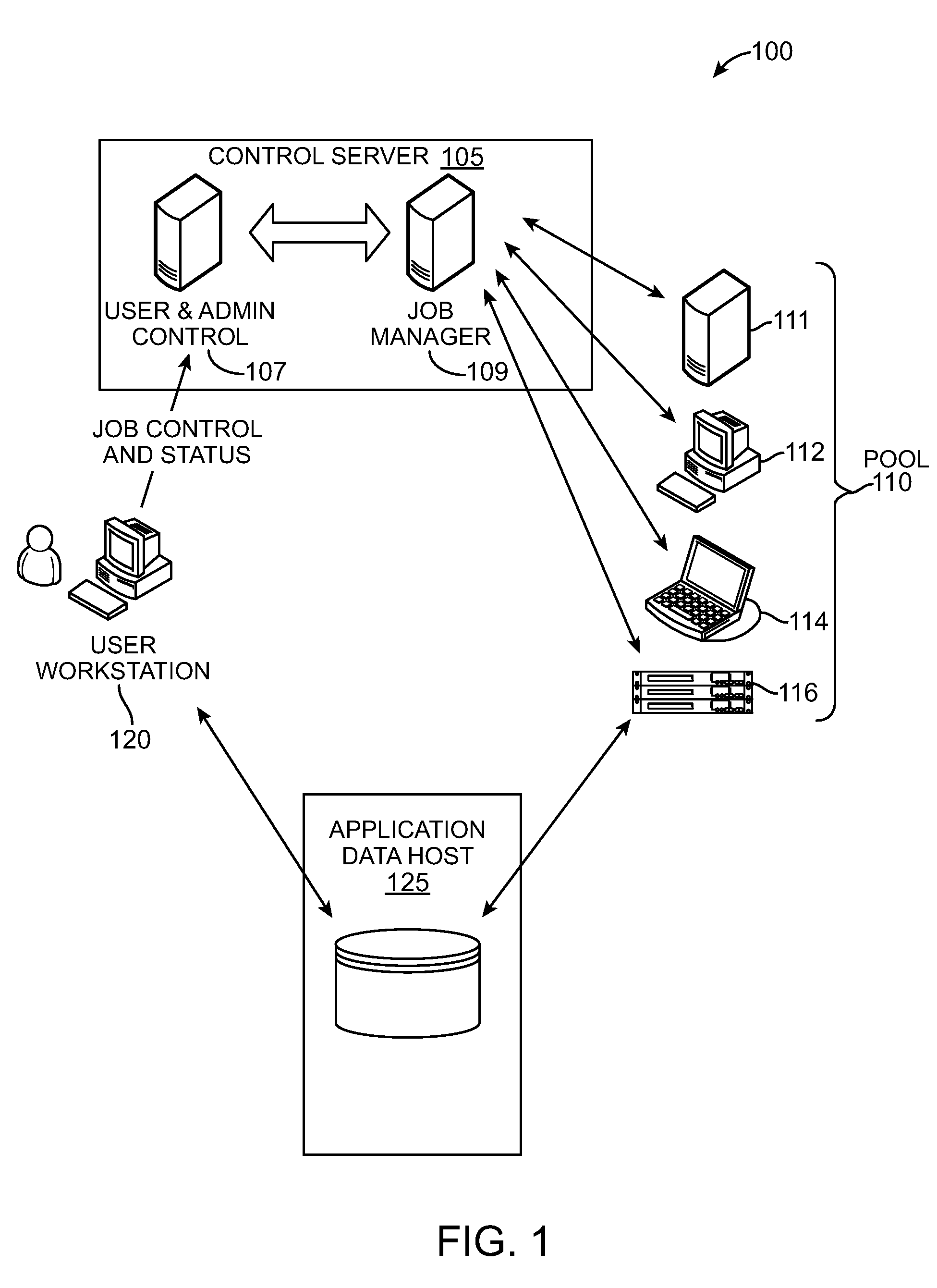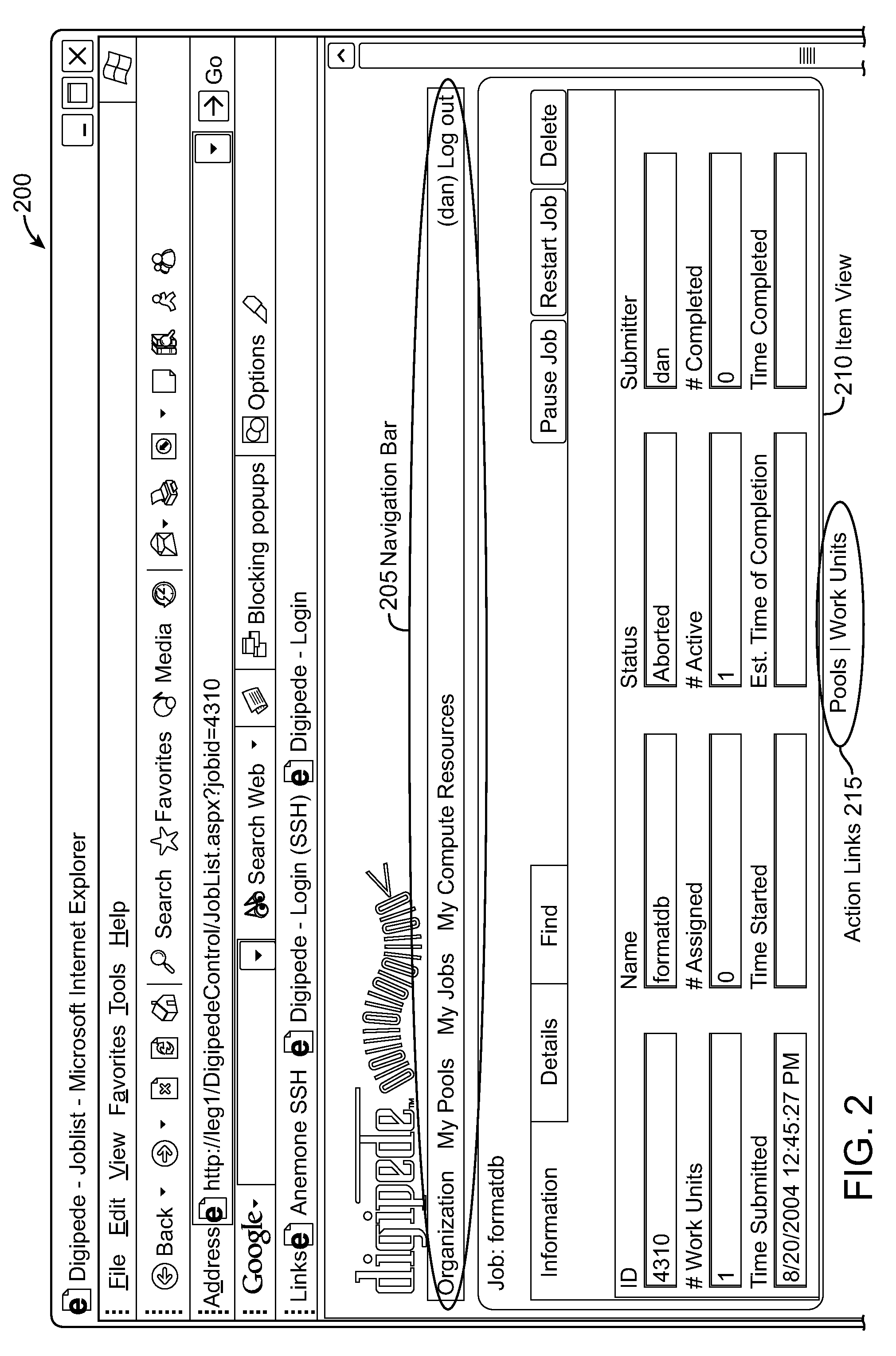Multicore distributed processing system using selection of available workunits based on the comparison of concurrency attributes with the parallel processing characteristics
a distributed processing and workunit technology, applied in the field of parallel processing systems, can solve the problems of increasing the inability of individual computers to meet performance demands, the development and maintenance of software for controlling and optimizing clusters requires significant specialized expertise, and enterprises must spend a great deal of time and money to acquire and maintain large clusters of computers. achieve the effect of improving the performance of applications, fast and relatively lightweight internal communication systems
- Summary
- Abstract
- Description
- Claims
- Application Information
AI Technical Summary
Benefits of technology
Problems solved by technology
Method used
Image
Examples
Embodiment Construction
[0043]An embodiment of the invention is a distributed processing system that delegates the allocation and control of computing tasks to intelligent agent applications running on each of the computing resources. This approach provides the advantage of allowing more flexible control of the computing resources, more efficient allocation of the computing resources, more accurate information about the computing resources available to the distributed processing system, greater scalability of the distributed computing system, and less complex requirements for developing or adapting applications for the distributed computing system.
[0044]An embodiment of the distributed processing system includes an intelligent agent, a server, and a set of application programmer interfaces (APIs). The intelligent agent is run on every computer system that can contribute computing resources to the distributed processing system. For example, the intelligent agent can run on each node of a dedicated cluster, ...
PUM
 Login to View More
Login to View More Abstract
Description
Claims
Application Information
 Login to View More
Login to View More - R&D
- Intellectual Property
- Life Sciences
- Materials
- Tech Scout
- Unparalleled Data Quality
- Higher Quality Content
- 60% Fewer Hallucinations
Browse by: Latest US Patents, China's latest patents, Technical Efficacy Thesaurus, Application Domain, Technology Topic, Popular Technical Reports.
© 2025 PatSnap. All rights reserved.Legal|Privacy policy|Modern Slavery Act Transparency Statement|Sitemap|About US| Contact US: help@patsnap.com



